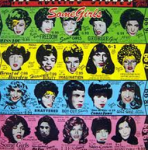Stephanie Verni's Blog, page 44
February 27, 2018
Meeting Guidebook Author and Travel TV Host Rick Steves
Today, my magazine writing students and I, along with members of the Stevenson University community, were treated to an afternoon session with guidebook author and travel television host, Rick Steves. Steves’ warm and friendly demeanor and sense of humor had the attendees listening intently as he shared his travel and work stories.
If you’re not familiar with this expert traveler, you are missing out. Steves runs a company called Rick Steves’ Europe, which has grown from a one-man operation to a thriving company with over 100 employees. In this capacity, he produces more than 50 guidebooks on European travel and is able to host a weekly hour-long radio show on NPR, write a weekly syndicated columm, and take viewers on adventures in America’s most popular travel series on PBS.
[image error]Rick Steves takes a selfie with members of my magazine writing class!
[image error]Rick Steves with his two student escorts from Magazine Writing – Christine and Tyler.
My magazine writing students were armed and ready for the interaction and had prepared a list of questions for Steves. After I was introduced to him upon his arrival, he asked if the students would have questions, to which I replied—”Lots of them!”—and showed him the list they had put together at his request. Luckily for us, he decided to start his talk by answering questions the students had assembled, which was a lot of fun.
In this Q&A session, we learned that his favorite place to travel is India and that he feels quite at home with “his people” in Norway. (I could relate, as my favorite place I’ve traveled has been Italy, as I’ve felt quite comfortable with “my own people” there. I suppose our heritage does have a lot to do with those sentiments when we travel).
Ironically, at 14, he didn’t want to travel at first, but his dad made him, and he began to fall in love with it. By 18, he was traveling on his own, and the seeds of his future were planted. It’s not all easy, according to Steves, who puts in 60 hour weeks at work. But it pays off tremendously for him, as he stated that he “loves what he does,” and we didn’t have to ask twice about it, because it was quite apparent from his talk that Steves not only loves his job, but it has become a part of him.
Perhaps the most poignant moment came when I saw the students nod after Steves said that you “must find work that you believe in; my company is mission-driven” and that mission makes him passionate about his work. He encouraged all of us to find our own passion and to go for it.
[image error][image error]When he answered the question, “What do you do when you get writer’s block?” Steves said, “I don’t get writers block. I don’t allow it to happen. I just write.” He likened finding good stories to “catching butterflies” — that you can’t let a story get away. That you have to capture each butterfly one at a time. You must write it down, even if it is in a little notebook and transcribe it into your computer later in the day. Afterwards, you can play with what you wrote and turn it into something meaningful.
When asked how Steves was able to be so successful, he replied that it was always his intention to “generate good content” and that that is the key to success, along with work ethic and passion. If you provide superb content for folks, they will continue to seek out your advice and suggestions, and Steves believes this is what has led to his growth and ultimate success.
I’ve been teaching travel writing as part of feature writing for over ten years now; additionally, I have taught a stand-alone travel writing course, whereby the students must travel locally (in Maryland, Virginia, D.C., or Delaware) for a minimum of two days to a place, immerse themselves in the place, take 20 pages of notes, do research, and then construct a 2,500-word article about traveling to that place. Students seem to like this course a lot because it melds everything that they have learned from their degree in communication into this one class, from writing to interviewing folks to intercultural and interpersonal communication theories and practices to finding out a little bit about themselves.
For all of these reasons, it was a thrill for meet to meet a true world traveler who writes books and articles and helps guide us to learn about the world and ourselves through travel. He promotes traveling without fear, and encourages us all to get out and see the world.
***
This was an episode of Rick Steves’ show that we watched in class. Having been to the Cotswolds, I absolutely loved this episode.
***
[image error]Stephanie Verni is Professor of Business Communication at Stevenson University and is the author of Inn Significant, Baseball Girl, and Beneath the Mimosa Tree. Along with her colleagues Leeanne Bell McManus and Chip Rouse, she is a co-author of Event Planning: Communicating Theory and Practice, published by Kendall-Hunt.
February 26, 2018
Things You Can Learn From A Sports Journalist
I’ve been reading Mitch Albom books for years.
For people who say they don’t have time to read books, Mitch Albom is for you.
The sports journalist and columnist whose career took off at the Detroit Free Press became a best-selling author with Tuesdays with Morrie over 20 years ago, and continues to write touching stories for mass audiences. His novels and nonfiction are compact and easy to read, with deep messages of love, hope, loss, and recovery.
On average, his books are roughly 250 pages and are economically written. His journalistic writing style melds perfectly into the stories he concisely weaves whereby Mark Twain would be proud (“When you catch an adjective, kill it! ~ Twain). Albom’s ability to sweep us quickly into his stories the way journalists do by writing a clear and strong lead (including the who, what, where, when, why, and how of newswriting) translates into his ability to tell intriguing stories through fiction or nonfiction narrative storytelling. As an author and former magazine writer myself, I’ve identified Albom’s three main gifts that others can learn from him. They are as follows:
You don’t need to tell long stories to tell a good story. All of Albom’s stories are poignant, but compact, from Tuesdays with Morrie to The Five People You Meet in Heaven, to the one I’m finally getting around to reading now, The Time Keeper.
Stories can unravel quickly if you know how to get to the point. Albom’s larger stories are made up of numerous anecdotes that help us “see” the characters. Rarely, does Albom tell us anything. Good writers show readers things as opposed to telling readers things so that readers can make up their own minds. Instead, he delves into his portraits of his characters so that we understand them straightaway.
Word choice and sentence composition are everything. Albom whittles down his sentences masterfully; he doesn’t mince words, and he chooses only the best ones to make up his strong sentences. In one short sentence or paragraph or scene of dialogue, he tells readers all we need to know, almost to the point where any additional information would just be fluff. Take this beautiful example into consideration from The Time Keeper:
“I made such a fool of myself,” she lamented.
“Love does not make you a fool.”
“He didn’t love me back.”
“That does not make you a fool, either.”
“Just tell me …” Her voice cracked. “When does it stop hurting?”
“Sometimes never.”
― Mitch Albom, The Time Keeper
If you haven’t read any of Albom’s works and are striving to be a fiction or nonfiction writer, I encourage you to read some of his books. While they may not be categorized as “great literary fiction,” there are certainly benefits to reading all different types of writers. People who started as journalists have a way of being able to get to the core of storytelling well. For example, legendary writers such as Ernest Hemingway and John Steinbeck started out as journalists. Elizabeth Gilbert and Anna Quindlan were journalists before they were best-selling authors. The list is a long one, and we can learn from them all.
But watch Albom’s magic unravel as you read one of his books. There are techniques there worth investing your time.
***
[image error]Stephanie Verni is Professor of Business Communication at Stevenson University and is the author of Inn Significant, Baseball Girl, and Beneath the Mimosa Tree. Along with her colleagues Leeanne Bell McManus and Chip Rouse, she is a co-author of Event Planning: Communicating Theory and Practice, published by Kendall-Hunt.
February 14, 2018
Flirting with Style – Fashion Over 40. Or 50.
[image error]I love Instagram. I love discovering other people and connecting with folks from all over the globe. I also love to follow fashion bloggers—to see what ideas I might come across that would suit my body type and personality.
[image error]Well, the other day I came across someone who has definitely sparked my interest. Her name is Lyn Slater, and she’s the ACCIDENTAL ICON. You may have seen a video about her on Facebook, but if you haven’t, let me tell you what little I know about her. She attended a fashion show wearing something tremendous and people noticed her and thought she was someone famous, and her friend said to her, “You’re an accidental icon.” Hence the name of her blog: accidentalicon.com. She also happens to be 64, and she’s inspired me to not dread aging, as I have found myself doing for the last 10 years. She made me look at it in a different way. She says she even has young people tell her that she’s made them not fear growing older.
I love the fact that she has always embraced her style. And owns it. At any age.
People come in all different shapes & sizes, have different clothing ideas of what works for them; and allow their personalities to shine through in their clothes.
Anyway, after considering all this, here’s my new take, and what I posted on my Instagram a few days ago.
Some people ask me why I post outfits so often. Fashion, to me, is fun. As someone who is over 50, when I was younger I always thought by the time I reached this age, that I might not care about what I wear anymore. But I still do. I still love playing dress up. Just as people like to work out to feel better, playing with fashion and what I wear makes me feel good. Of course what’s on the inside of a person is so much more important, but feeling good about yourself on the outside does matter and helps your mental state. I’m about to go do some writing in my home office, and staying in my work clothes keeps me in that “I’m working” state of mind. Anyway–bottom line: you can still have style as you age. As Coco Chanel always said, “Nature gives you the face you have at twenty; it is up to you to merit the face you have at fifty.”
Some of my latest outfits I’ve shared…










Bottom line on this Valentine’s Day: accept yourself, your age, and don’t be afraid to dress the way that makes you feel your best.
***
[image error]Stephanie Verni is Professor of Business Communication at Stevenson University and is the author of Inn Significant, Baseball Girl, and Beneath the Mimosa Tree. Along with her colleagues Leeanne Bell McManus and Chip Rouse, she is a co-author of Event Planning: Communicating Theory and Practice, published by Kendall-Hunt.
February 13, 2018
Don’t Have Money To Spend This Valentine’s Day? Take A Cue From St. Valentine and Write A Letter
St. Valentine lived during the time of Claudius the Cruel in Rome. Under his rule, Claudius was not fond of men who would not join his military leagues due to their devotion to their wives and families. Therefore, Claudius banned marriages and engagements in Rome. However, Valentine defied the emperor and continued to perform marriage rituals for people in love in secret.
When Claudius discovered what Valentine was doing, he ordered him put to death. The sentence was carried out on February 14.
 While in jail and prior to his death, Valentine wrote a farewell note for the jailer’s daughter, who had become a friend. At the end of the letter, he wrote, “From Your Valentine.”
While in jail and prior to his death, Valentine wrote a farewell note for the jailer’s daughter, who had become a friend. At the end of the letter, he wrote, “From Your Valentine.”
Hence, why we call love notes and letters during this time Valentines.
After his death, Valentine was named a saint, and we celebrate Valentine’s Day.
Second, get out your pen and paper if your wallet is dry…
There is nothing more sentimental, sweet, and loving than writing a heartfelt love letter to your Valentine or someone you love or someone who has changed your life or helped you along the way.
It’s not difficult to write a letter, it just takes a few moments of your time.
[image error]Here are some ideas for writing that letter:
Share what they mean to you
Recount a meaningful, funny, or sentimental story you’ve shared
Tell them what you’re looking forward to in the future
Write from the heart, in your language, using your words
Pick pretty stationery or a card that suits your relationship
Plan to do something together that doesn’t cost anything and put it in writing. Some examples could include the following: taking a walk, strolling a museum, going on a hike, sitting by the river together with a book, watching a movie or your favorite show on television, attending a poetry reading at a local bookstore–anything that the two of you can do that does not cost money
Remember, your Valentine loves YOU not your money (or lack thereof), so do what you can do, and put your heartfelt words on paper.
They will love you even more for it.
***
[image error]Stephanie Verni is Professor of Business Communication at Stevenson University and is the author of Inn Significant, Baseball Girl, and Beneath the Mimosa Tree. Along with her colleagues Leeanne Bell McManus and Chip Rouse, she is a co-author of Event Planning: Communicating Theory and Practice, published by Kendall-Hunt.
February 12, 2018
How My READING BOOKS Poll Stacks Up Against (pun intended) Official Polls
We just completed the third week of the spring semester, and as is typical as I begin to talk about writing and reading in classes and asking students questions, I can get a little depressed when I realize how few students are reading books for pleasure these days. With so many distractions such as television, video games, socializing with friends, sports, and other commitments and activities, I decided to conduct my own informal poll on Facebook, something I had never done before.
The question I posed was this: HOW MANY BOOKS DID YOU READ IN 2017?
0-10 OR MORE THAN 11?
I received 143 responses, and the percentages are reflected in the infographic below.
[image error]
While my poll didn’t have the same questions as the Pew Research Polls, which are broken out and are much more in-depth, I wanted to give it a try anyway. What I didn’t take into account was how many people had read zero books and kept that as a separate question. Perhaps the next poll will reflect reading zero books in a year.
My findings, however, relay some good news, at least, I think so. It shows that people are reading—some more than others for various reasons—but they seem to be reading some books throughout the year.
What made me conduct this poll?
I had read an article from The Atlantic from 2014 called The Decline of the American Book Lover about books and reading, and it prompted me to do my own informal research for this post. As someone who is a strong advocate of reading—and reading a lot of anything that interests you—I became somewhat engrossed in finding out more. Through several sites, I was able to compile the information below about books and reading from the Pew Research Institute, and I have put it together for you in an easy-to-read infographic below.
The Bad News & Good News
The bad news in the Pew Research findings was that 19% of people haven’t visited a Library (such a great resource, you guys!), and 26% of Americans are not reading at all. There was also a decline in e-reading.
The good news from my pols and their polls is that people ARE reading still…and in 2016, they preferred a physical book to reading books electronically. There’s been a 16% surge in children’s books, and on average, people are reading four books in a six-month period. The average number of books read in a year is 12.
At least, that’s what the research is trending toward today.
[image error]
***
[image error]Stephanie Verni is Professor of Business Communication at Stevenson University and is the author of Inn Significant, Baseball Girl, and Beneath the Mimosa Tree. Along with her colleagues Leeanne Bell McManus and Chip Rouse, she is a co-author of Event Planning: Communicating Theory and Practice, published by Kendall-Hunt.
February 7, 2018
What To Do With A Broken Heart
[image error]We walk around in a daze. We make up lies and we tell them to ourselves. We go over and over it again in our minds as we attempt to decipher exactly what went wrong and who is to blame. We wonder if there’s any way possible we can fix it. We agonize, stop eating, agonize some more, find we cannot concentrate on work, pull away from people, and go through an intense mourning period. Some folks even go as far as to want to give up.
If we’re not careful, we can give up on ourselves.
That’s the way it works when we have a broken heart and we don’t know how to fix it—when we don’t know how to make someone we love more than life itself love us.
As the speaker in the Ted Talk below notes, we have all probably been there at one time or another…or another. Perhaps we’ve been there several times. We become like a broken record playing it over and over again in our minds. Sometimes the pain is so intense, we don’t know how to tend to it.
I wish this Ted Talk had been around when I’d been through a few doozies. I may have actually listened to Guy Winch because he makes so much sense. He tells it like it is, and as we listen, his ideas sink in. I thought I’d share this today for anyone who may need a little push to find himself or herself again.
As Valentine’s Day is around the corner and tons of people are celebrating the somewhat ridiculous holiday, there are many who will be sad and broken-hearted. There are some folks who are trying to get over a lost love or broken relationship. Patience is advised to those of us who act as friends during these trying times as you will see. Patience and understanding.
Remember how it felt when you went through it, and promise yourself to be there for someone who needs you.
It’s true–we can’t make people love us. But we do have the power to be there for people who have lost love and their hearts are breaking.
***
[image error]Stephanie Verni is Professor of Business Communication at Stevenson University and is the author of Inn Significant, Baseball Girl, and Beneath the Mimosa Tree. Along with her colleagues Leeanne Bell McManus and Chip Rouse, she is a co-author of Event Planning: Communicating Theory and Practice, published by Kendall-Hunt.
February 5, 2018
Giving Away Some LOVE…stories. An Amazon Book Giveaway—Inn Significant
[image error]* * *
Want to enter to win a copy of INN SIGNIFICANT?
See this #AmazonGiveaway for a chance to win: Inn Significant: A Novel.
https://giveaway.amazon.com/p/1363f40b123b3f2a
NO PURCHASE NECESSARY.
Ends the earlier of Feb 11, 2018 11:59 PM PST, or when all prizes are claimed. See Official Rules http://amzn.to/GArules.
[image error]
***
[image error]Stephanie Verni is Professor of Business Communication at Stevenson University and is the author of Inn Significant, Baseball Girl, and Beneath the Mimosa Tree. Along with her colleagues Leeanne Bell McManus and Chip Rouse, she is a co-author of Event Planning: Communicating Theory and Practice, published by Kendall-Hunt.
February 4, 2018
In Celebration of Valentine’s Day — Book Giveaways This Week
After the BIG GAME is over, I figured it may be time to hunker down with some reading as we wait for winter to get the hell out of town. Plus, VALENTINE’S DAY is coming up, and I wanted to give away some love in the form of my contemporary fiction novels. I’ve completed reading four terrific books since January, and am presently reading numbers 5 & 6. I’m posting my reading list on the blog for you as it’s always nice to see what others are reading. Likewise, I’d love for you to share what you’ve read that you’ve enjoyed.
BOOK GIVEAWAYS
I’ll be posting my book giveaways this week, as I’m giving away one of each of my books to some random winners. When they go live, I’ll share the information on how to enter.
In the meantime, below are some excerpts from each of my three novels in print and they are available on both Amazon and Barnes & Noble.
To order my books…
For more information on AMAZON, click here.
For more information on BARNES & NOBLE, click here.
Enjoy the game tonight and keep reading!
[image error]
[image error]
[image error]
***
[image error]Stephanie Verni is Professor of Business Communication at Stevenson University and is the author of Inn Significant, Baseball Girl, and Beneath the Mimosa Tree. Along with her colleagues Leeanne Bell McManus and Chip Rouse, she is a co-author of Event Planning: Communicating Theory and Practice, published by Kendall-Hunt.
February 3, 2018
What Makes A Good Story?
Talking with students during this week’s artist’s exhibit at Stevenson University, we chatted about what makes a good story. From students studying film to students who are writers, some of these tips below are my favorites for inspiring beginning writers to focus and start the process and work on their craft. The infographic posted below was part of my exhibit.
Writing Is Hard
Writing is hard, as we have heard time and time again from folks such as William Zinsser to contemporary magazine writer Tom Junod (pictured below), and the one thing that rings true for all writers is that it takes work. However, these tips are some that you can think about as you start your process, especially if you are writing fiction.

Also, READ a lot and WRITE a lot…anything, anytime. It’s about practice and it’s about bringing things together.
I hope this little tid-bit sheet proves helpful.
Let me know how your writing is coming along.
[image error]
Anniversary
Also, today is the one-year anniversary of seeing my third novel, Inn Significant, in print for the first time. It’s an exciting process to watch your novel come full circle and to see it finally in book form. From all the positive feedback I have received, I’ve decided to publish a sequel, so hang tight. I’m working on it.
One word at a time.
[image error]
It will never get old for me.
***
[image error]Stephanie Verni is Professor of Business Communication at Stevenson University and is the author of Inn Significant, Baseball Girl, and Beneath the Mimosa Tree. Along with her colleagues Leeanne Bell McManus and Chip Rouse, she is a co-author of Event Planning: Communicating Theory and Practice, published by Kendall-Hunt.
January 28, 2018
Challenge Accepted! 5 Random Facts About Me
[image error]
Thank you, From My Hart, for the challenge. I am definitely up for this, as it’s something fun and different from what I normally post, so thank you for getting me away of my regular posts.
Here are 5 Random Things About Me…
#1—I was totally obsessed with Mick Jagger and Some Girls as a teenager


I actually own two incarnations of this album: the one on the right was the first version the Stones put out with wigs and then cutouts with faces. They apparently used celebs without their permission and had to redo the cover. When they did, they took out the faces and put “not available” or left it blank (on the left). My friend, Lee, and I played the Stones over and over, pined over Mick Jagger, and drove all our friends crazy with Rolling Stones trivia. I finally saw Jagger and the Stones on back-to-back nights in my twenties at RFK Stadium in Washington, D.C.
#2—I cry a lot.

A sad or touching Hallmark movie, a really good book, watching my kids do something amazing (Matt’s golf or Ellie’s dancing), a sentimental card or song on the radio, a sweet older person, beautiful poetry, a precious baby or toddler, writing a character, lost friendships…there are more, but you get the gist from these examples that…
I’m a total weeper.
#3—I am done with big-mouth celebrities.
[image error]My friends and I will have to find other reasons to get together now.
For many years, I loved celebrities and the Oscars. I used to have an Oscar party every year, basically since 1993. Those days are done. I am tired of celebrities as a whole thinking they need to tell us what to think, how to act, and that they might know better than we do. I am tired of the mean-spirited posts on social media that I see.
My love affair with them ended a few years ago, but the past two years have made me pay no mind to them at all.
Do not hand me a copy of People magazine. I have no interest.
#4—I really love hats.







I wish hats were worn like they were back in the 1920s, 1930s, 1940s, 1950s, and even in the 1960s.
The best iconic hat wearers, in my opinion are Audrey Hepburn, Jackie Kennedy, and Michelle Dockery (Mary from Downton Abbey).


 #5—I adore my family, my parents, and I think my in-laws are pretty fantastic, too.
#5—I adore my family, my parents, and I think my in-laws are pretty fantastic, too.[image error]
This pic’s a few years old…but…
I consider myself blessed to have these wonderful people in my life. I am so lucky to have family who are loving, helpful, and are always there to lend an ear.
That’s it!

***
[image error]Stephanie Verni is Professor of Business Communication at Stevenson University and is the author of Inn Significant, Baseball Girl, and Beneath the Mimosa Tree. Along with her colleagues Leeanne Bell McManus and Chip Rouse, she is a co-author of Event Planning: Communicating Theory and Practice, published by Kendall-Hunt.



